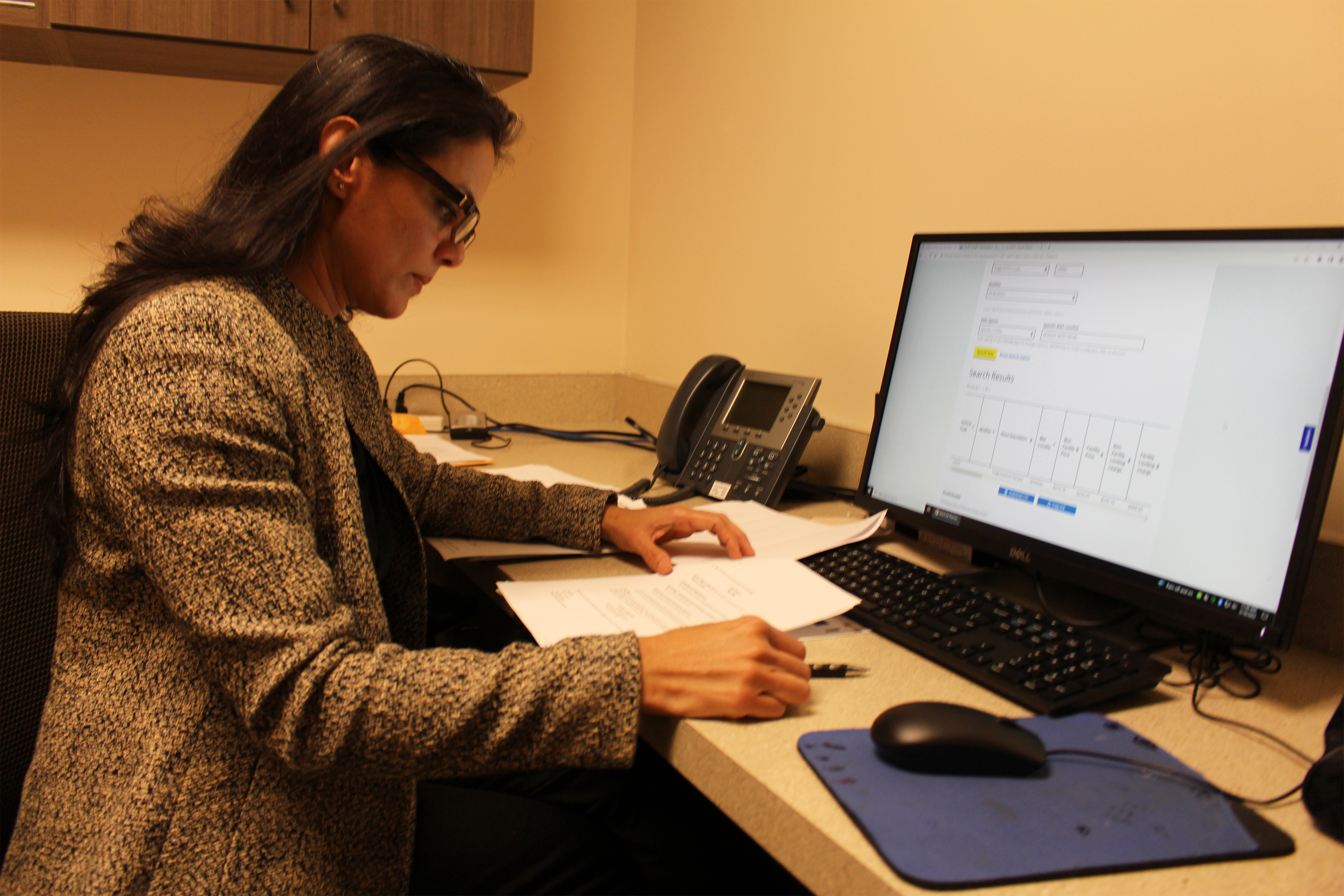Durante varias semanas al año, el trabajo de la enfermera-comadrona Karen Sheffield-Abdullah es detectivesco. Con un equipo de investigadores médicos del Departamento de Salud Pública de Carolina del Norte examina los registros hospitalarios y los informes forenses de las madres que murieron después de dar a luz.
Estos comités de revisión de la mortalidad materna buscan pistas sobre lo que ha contribuido a estas muertes —recetas que nunca se recogieron, faltar a citas médicas postnatales, señales de alerta que los médicos pasaron por alto—, para averiguar cuántas podrían haberse evitado y cómo.
Los comités trabajan en 36 estados, y en la última y mayor recopilación de datos de este tipo, publicada en septiembre por los Centros para el Control y Prevención de Enfermedades (CDC), un sorprendente 84% de las muertes relacionadas con el embarazo se consideraron prevenibles.
Lo que resulta aún más alarmante para enfermeras-detectives como Sheffield-Abdullah es que el 53% de las muertes se produjeron mucho después de que las mujeres fueran dadas de alta del hospital, entre siete días y un año después del parto.
“Estamos muy centrados en el bebé”, afirma. “Una vez que el bebé está aquí, es casi como si la madre fuera descartada… Y en lo que realmente tenemos que pensar es en ese cuarto trimestre, ese tiempo después del nacimiento del bebé”.
Las condiciones de salud mental fueron la principal causa subyacente de muertes maternas entre 2017 y 2019. Las blancas no hispanas y las hispanas fueron las más propensas a morir por suicidio o sobredosis de drogas, mientras que los problemas cardíacos fueron la principal causa de muerte para las mujeres negras no hispanas.
Ambas circunstancias ocurren desproporcionadamente más tarde en el período posparto, según el informe de los CDC.
Los datos revelan múltiples deficiencias en el sistema de atención a las nuevas madres, desde los obstetras que no están adiestrados (o bien pagados) para buscar signos de problemas mentales o de adicción, hasta las pólizas que despojan a las mujeres de la cobertura médica poco después de dar a luz.
El principal problema es que el típico control postnatal de seis semanas es demasiado tarde, según Sheffield-Abdullah. En los datos de Carolina del Norte, las nuevas madres que murieron más tarde no acudieron a esta cita porque tenían que volver al trabajo o tenían otros niños pequeños, agregó.
“Tenemos que estar realmente en contacto mientras están en el hospital”, dijo Sheffield-Abdullah, y luego asegurarnos de que las pacientes reciban la atención de seguimiento adecuada “una o dos semanas después del parto”.
Otra de las recomendaciones de los CDC es más pruebas de detección de depresión y ansiedad posparto, durante todo el año posterior al parto, así como una mejor coordinación de la atención entre los servicios médicos y sociales, según David Goodman, que dirige el equipo de prevención de mortalidad materna de la División de Salud Reproductiva de los CDC, que publicó el informe.
Una crisis frecuente es que la adicción de uno de los padres se agrava tanto que los servicios de protección infantil se llevan al bebé, lo que precipita una sobredosis accidental o intencionada de la madre. Tener acceso al tratamiento y asegurarse de que las visitas a los niños se produzcan con regularidad podría ser la clave para prevenir estas muertes, apuntó Goodman.
El cambio político más importante ha sido la ampliación de la cobertura sanitaria gratuita a través de Medicaid, indicó. Hasta hace poco, la cobertura de Medicaid relacionada con el embarazo solía expirar dos meses después del parto, lo que obligaba a las mujeres a dejar de tomar medicamentos o de acudir a un terapeuta o a un médico porque no podían pagar el costo sin seguro médico.
Ahora, 36 estados han ampliado o tienen previsto ampliar la cobertura de Medicaid hasta un año completo después del parto, en parte como respuesta a los primeros trabajos de los comités de revisión de la mortalidad materna.
“Si esto no es una llamada a la acción, no sé qué es”, señaló Adrienne Griffen, directora ejecutiva de la Maternal Mental Health Leadership Alliance, una organización sin fines de lucro centrada en la política nacional. “Hace tiempo que sabemos que los problemas de salud mental son la complicación más común del embarazo y el parto. Solo que no hemos tenido la voluntad de hacer algo al respecto”.
El último estudio de los CDC de septiembre analizó 1,018 muertes en 36 estados, casi el doble de los 14 estados que participaron en el informe anterior. Los CDC están dando aún más fondos para las revisiones de la mortalidad materna, dijo Goodman, con la esperanza de captar datos más completos de más estados en el futuro.
El aumento de la concientización y la atención sobre la mortalidad materna les ha dado esperanza a activistas y médicos, especialmente por los esfuerzos para corregir las disparidades raciales: las mujeres negras tienen tres veces más probabilidades de morir por complicaciones relacionadas con el embarazo que las blancas.
Pero muchos de estos mismos partidarios de una mejor atención materna dicen estar consternados por la reciente decisión del Tribunal Supremo de Estados Unidos de erradicar el derecho federal al aborto; las restricciones en torno a la atención de la salud reproductiva, dicen, erosionarán los avances.
Desde que estados como Texas empezaron a prohibir los abortos en etapas tempranas del embarazo y a hacer menos excepciones para aquellos casos en los que la salud de la embarazada está en peligro, a algunas mujeres les resulta más difícil recibir atención de urgencia por un aborto espontáneo.
Los estados también están prohibiendo los abortos —incluso en casos de violación o incesto— en chicas jóvenes, que afrontan un riesgo mucho mayor de complicaciones o muerte por llevar un embarazo a término.
“Cada vez más el mensaje es que ‘no eres dueña de tu cuerpo'”, dijo Jameta Nicole Barlow, profesora adjunta de redacción, política y gestión sanitaria en la Universidad George Washington.
Según Barlow, esto no hará más que agravar los problemas de salud mental que experimentan las mujeres en torno al embarazo, especialmente las mujeres negras, que también se enfrentan a la larga historia intergeneracional de la esclavitud y el embarazo forzado. Sospecha que las cifras de mortalidad materna empeorarán antes de mejorar, debido a la interrelación entre la política y la psicología.
“Hasta que no abordemos lo que está ocurriendo políticamente”, dijo, “no vamos a poder ayudar a lo que está ocurriendo psicológicamente”.
Esta historia es parte de una alianza que incluye a KQED, NPR, y KHN.
KHN (Kaiser Health News) is a national newsroom that produces in-depth journalism about health issues. Together with Policy Analysis and Polling, KHN is one of the three major operating programs at KFF (Kaiser Family Foundation). KFF is an endowed nonprofit organization providing information on health issues to the nation.
USE OUR CONTENT
This story can be republished for free (details).
from Health Industry – Kaiser Health News



